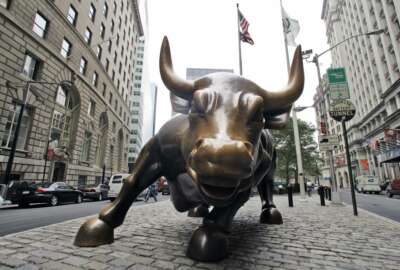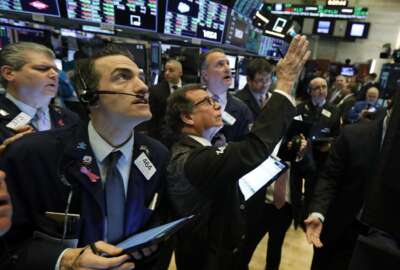
TSP investors: Resist that urge to sell!
It feels instinctual to want to sell securities now, but it's an instinct you should ignore.
Okay, you can panic a little. Just don’t do anything rash.
I’ll join you. The free floating anxiety spawned by the coronavirus threat has apparently tanked the stock market over the past week. Standard & Poor’s index is off 11% from its high a million years ago on Feb. 19. A one-day rally on Wednesday reversed itself. The Dow Jones Industrial Average ended up yesterday down 3%, dropping nearly 1,000 points.
I haven’t looked at my own investments. I don’t dare. But I looked at yours. All of the TSP indices are down.
So what should you do?
The smart money says, do nothing. Leave it all alone. You know this already, but it’s always worth reviewing at times like these. It’s more useful advice than telling you to sneeze into your elbow. The worst thing you can do is bail out of the market. That sets you up for a pattern of selling low and buying high. It might be a natural instinct to unload when it looks like the bottom is falling out. But it would still be an expensive mistake.
That advice, a reiteration of some ancient wisdom, comes from federal finance expert and ProFeds founder Chris Kowalik. She reminds people plowing money into long term retirement accounts to think long term.
Said Kowalik, “We have a little bit of a pucker factor happening right now because so many people are nervous with the market hit to the coronavirus, and people tend to react very poorly.” That’s for sure. But she said, when you’re in a broad based index fund, ask yourself what are the realistic chances that every company in the fund will go out of business.
Retirees should think about timing, not the market, but rather the withdrawal of their minimum required distribution. Because making the distribution is essentially selling low, if there’s a way you can wait until the market recovers, you could come out a little better.
If anything, you should buy more now, Kowalik said. Especially the higher growth funds, which show more volatility than the safe G Fund.
“We see the C, S and I take a hit. And so we think, ooh, this is the time to buy. And that might work in your favor,” Kowalik said.
She added, “And that’s certainly a better scenario than the opposite way, which is someone in the C, S and I funds who gets scared because of a market drop. And then they run to safety in the G fund and actually lock in their losses. So we would really encourage everyone whether you’re in the G fund or one of the market-based accounts, the C, S and I, to weather the storm, let the correction happen and get back to normalcy before you make any sweeping changes in TSP or frankly, any other account that you have like this.”
In my lifetime the Dow Jones Industrial Average hit 1,000 for the first time, then 5,000, 10,000 and, within the past few weeks, a shade below 30,000. So a “crash” to 25,000 or 26,000 in reality seems almost trivial.
Maybe not trivial, but a change to keep in perspective.
Copyright © 2025 Federal News Network. All rights reserved. This website is not intended for users located within the European Economic Area.
Tom Temin is host of the Federal Drive and has been providing insight on federal technology and management issues for more than 30 years.
Follow @tteminWFED






